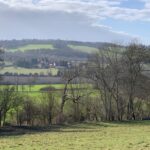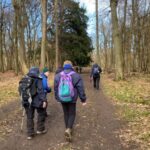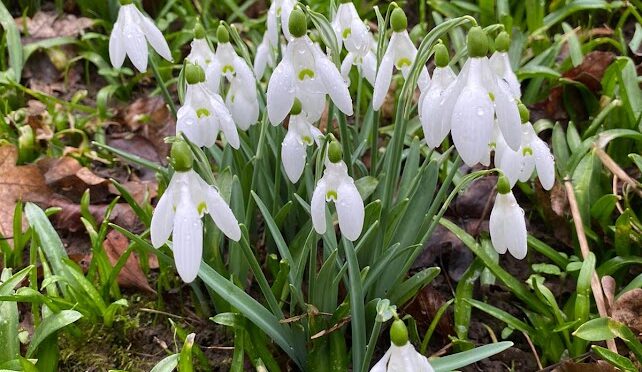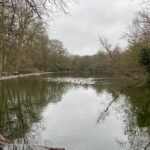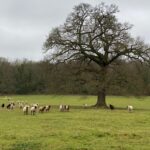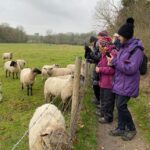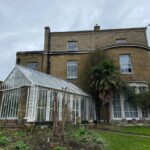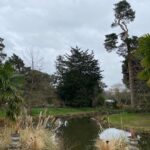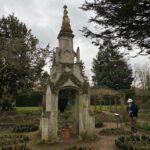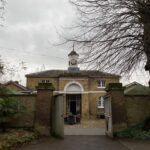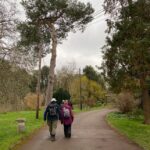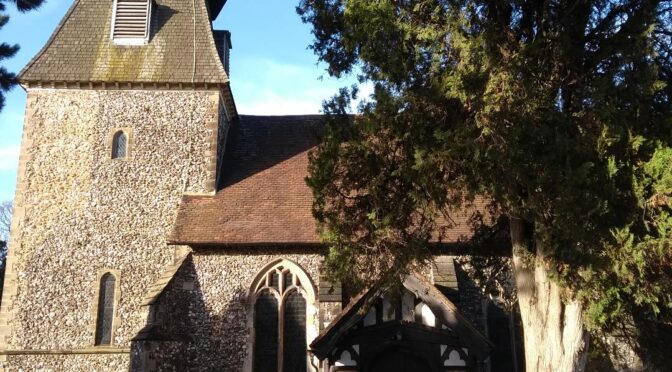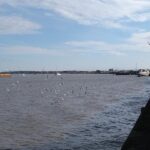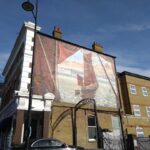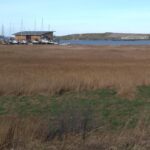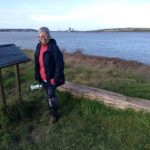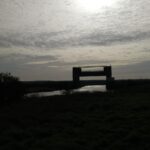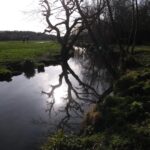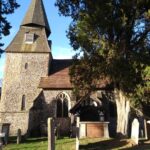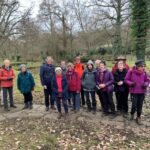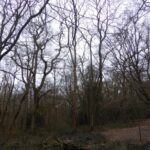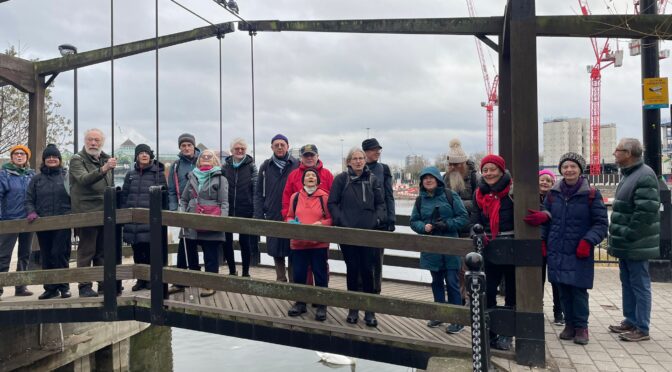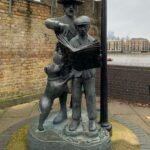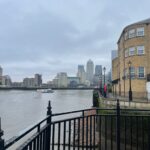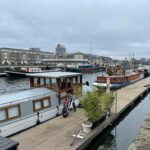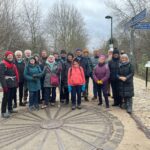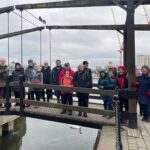It was a classic February day, cloudy, average temperature with a nippy north easterly wind blowing but dry, when 15 Poly Ramblers assembled outside Tring station for a circular walk.
The walk would take us not in the direction of the Ridgeway but the opposite direction around the village of Wigginton and up into Ashridge forest.
We set out and no sooner had we turned the corner into Beggar’s Lane than we came across the somewhat embarrassed faces of Gillian and Stuart standing by their car which had been driven into a puddle on parking. This had turned out to be deeper than they had expected and the car had got stuck. It was decided not to get the strongest of the Poly Ramblers to put their weight in front of the car and try to extract it from the puddle but instead Gillian rang for road side assistance and said she and Stuart would catch us up once the car had been sorted out.
We diverged from the road on to a footpath that took us up an incline where we could look across the valley towards Ashridge in one direction and Aylesbury vale in the other direction. We crossed a footbridge over the A41 eventually turning into the woods of Tring Park where we eventually came into a lane leading into the village of Wigginton. Here we made a lunch time stop at a sports field where there was a community shop and café at one end. We increased their customer numbers probably three fold but they were very welcoming and managed to accommodate us in their small inside seating area where Poly Ramblers soon fell into conversation with local dogwalkers. Soon after our arrival, Gillian and Stuart appeared, swelling our numbers to 17 Poly Ramblers. Thankfully there had been no damage done to their car.
After lunch, we continued out walk through a field with overcurious horses trying to bar our way through a kissing gate, and back across the A41, this time crossing under it, reaching a hamlet with the curious name of Cow Roast. Apart from a dilapidated looking former pub in the throws of being renovated, we passed two sports fields filled with teams of men and women respectively playing football and hockey.
Our path took us over the Grand Union Canal and over the Tring to London railway line, after which we started to rise up into Ashridge forest. The superb views across the valley were in the opposite direction from those we had seen on the other side in the morning. The sun had started to break through making an otherwise chilly day appear almost warm.
At a National Trust café in Ashridge Forest next to the Bridgewater monument ( a monument to the local aristocratic canal builder) we stopped for much needed hot drinks. Rain had threatened at various points on the walk but hadn’t amounted to much. Whilst we were at the café however, it turned heavier and we all retreated under an awning in the outdoor café to keep dry. By the time we got up to leave however, the rain had stopped and we took the steep path down the hill into the pretty village of Aldbury. On the 0.2 mile footpath from Aldbury to Tring station, the sun suddenly turned very bright and we saw the most magical sight of an intact rainbow one end of which was clearly visible over the village of Aldbury. Someone mentioned that this could be interpreted as a good luck omen.
Once back at Tring station we did not have to wait long for a train that took us back to London.
Mary. Photos by Mary and Nita and the car photo by Chris (thanks Chris!)






